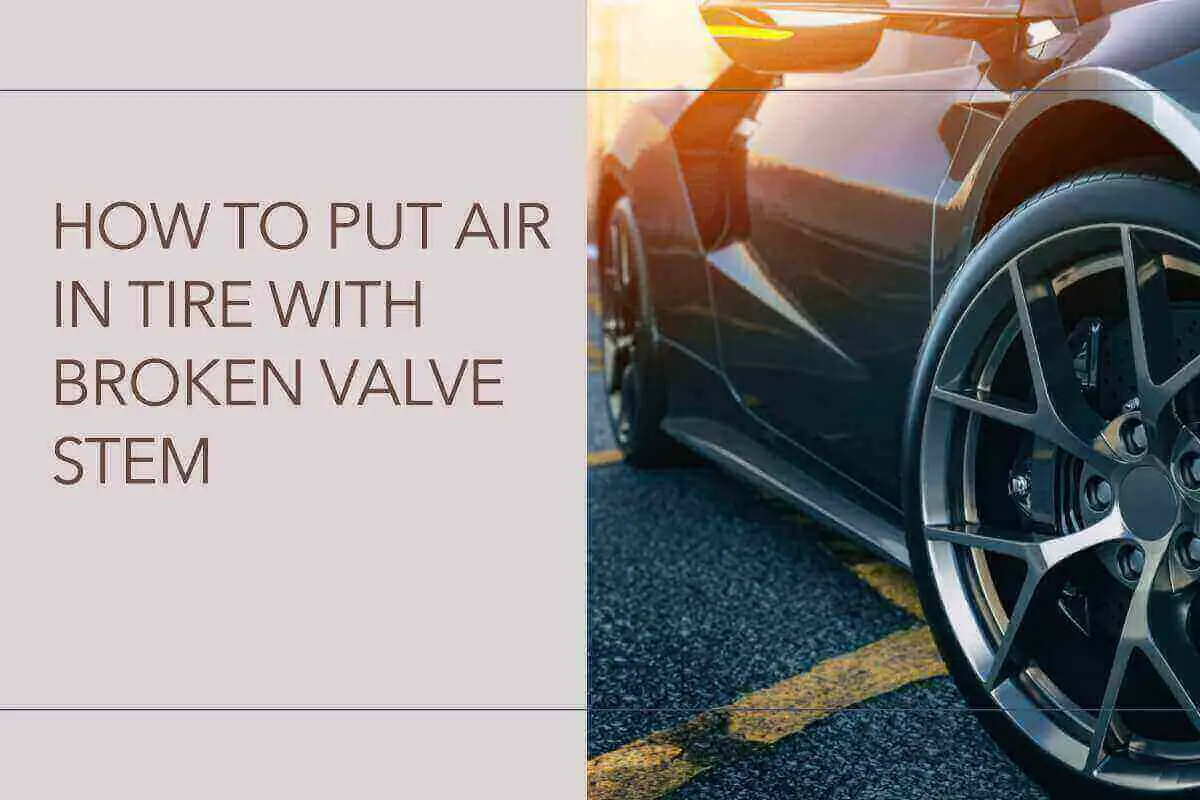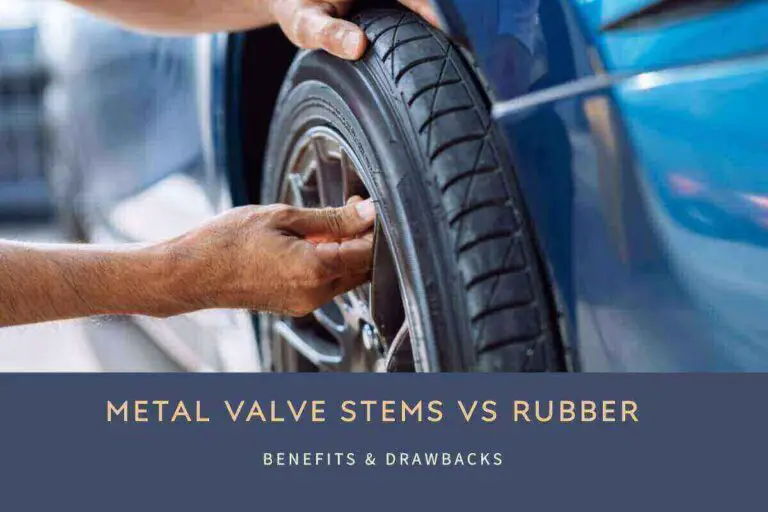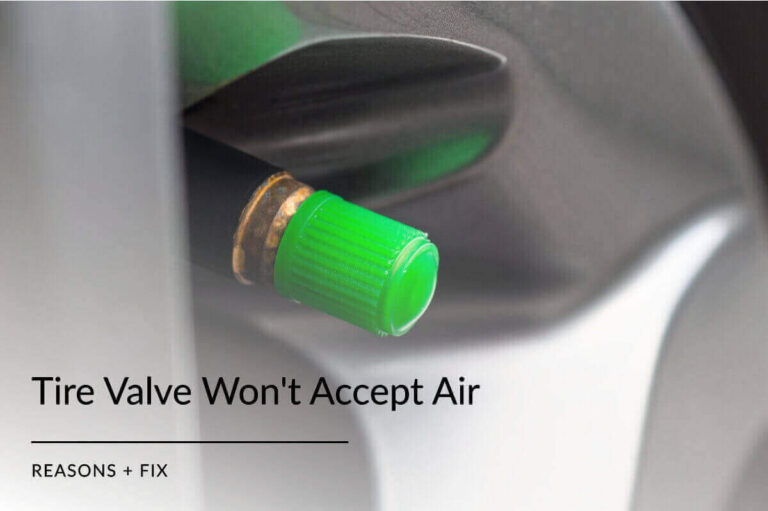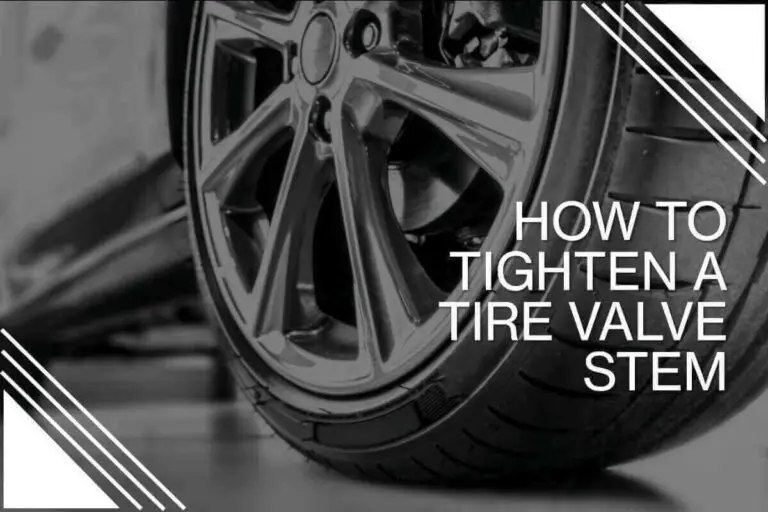Having a broken valve stem on your tire can make it difficult to inflate, but it doesn’t have to stop you from getting the job done. This article will explain step-by-step how to put air in your tire with a broken valve stem.
Whether you are looking for a temporary fix or need a more permanent solution, you’ll find the information here incredibly useful. Let’s start.
How To Put Air In Tire With Broken Valve Stem
Having a flat tire can be an irritating and time-consuming experience. It’s especially difficult to address if you have a broken valve stem. But with the right tools and know-how, putting air in your tire with a broken valve stem is possible and easy.
A flat tire can be a frustrating and costly experience, but learning how to put air in a tire with a broken valve stem can help to save time and money. Many roadside assistance services will not be able to change the tire unless the valve stem is replaced first, so understanding how to fill the tire with air properly is essential. This knowledge can help you get back on the road quickly and safely.
Here’s the step-by-step explanation.
Step 1: Removing Broken Valve Stem
The first step is locating the source of the leak, which is usually around the rim or tire where the valve stem is located. Once you have identified the air leak, you can remove the broken valve stem using special tools such as tire irons, pliers, and screwdrivers. Carefully insert each tool into its respective slot until all parts of the valve stem have been removed.
Step 2: Inserting Tube Adapter
Once the old valve stem is removed, it’s time to insert the tube adapter. To insert the tube adapter is to remove any dirt or debris from around the hole left by the broken valve stem. Doing so will ensure that no foreign objects get between the adapter and tire rim when inserting it, thus providing a secure seal.
Once it’s clean, line up one edge of the adapter with the center of the hole on your tire and press firmly until it clicks into place. Make sure not to twist or turn while pushing to prevent further damage from being done to your tire rim.
Step 3: Attaching Air Hose
In this step, you will need to attach an air hose to your compressor and place it over the stem of your tire. Doing so will enable you to inflate the tire while simultaneously pressurizing the stem and allowing airflow into it. Ensure your air hose has a secure connection with your compressor to ensure easy attachment.
Moreover, inspect for any damage or wear before attaching it. It can be done by carefully observing for any signs of cracking or fraying in both ends of the hose and checking for blockages in its opening. Ensure that there are no leaks from either side by testing the connection before placement on your tire’s stem.
Step 4: Adding Air to Tire
Adding air to a tire with a broken valve stem can be intimidating, but following these steps will make the process easier. Step 4 requires caution and patience as this is when you’ll add air into the tire.
Start by inserting your nozzle into the hole where the valve stem used to be, ensuring it’s securely in place. It is done using long-nose pliers or another tool that can help hold down the nozzle while inflating the tire.
Once it’s connected, start slowly adding air pressure until you’ve reached your desired amount. Check the gauge regularly during this process and stop if something doesn’t feel right – never overfill your tires.
Step 5: Checking for Leaks
Checking for leaks in the valve stem after you have put air into your tire is one of the most important steps. Doing this will ensure that the added air pressure has stayed inside the tire, and didn’t leak out. To check for leaks, start by wiping down any exposed parts of your tire where the valve stem was broken off and around where it was reattached.
Use soapy water to spray over all of these areas – if you notice any bubbles forming, this could mean an air leak. If no bubbles appear, your repair job is successful, and no more air should be needed in your tire! Finally, to ensure that pressure stays in the tire over time, check it again every few weeks.
Safety Considerations
Safety is of utmost importance when it comes to dealing with automotive repairs. As such, it is essential to consider safety considerations when attempting to put air in a tire. There are several key points that one must take into account before attempting to inflate the tire.
- Always use caution when inflating a tire and wear protective eyewear, gloves, and other clothing items as necessary.
- Inflating tires can be dangerous if done without proper safety measures in place.
- It is also important to make sure the area around you is clear of debris or other objects that could become projectiles during inflation.
- Make sure you have the right tools for the job – an air pump, pressure gauge, and possibly an extension hose depending on your situation.
Troubleshooting Common Problems
Tire problems are a common issue for car owners, especially when it comes to putting air in a tire valve stem broken in half. Knowing the right troubleshooting steps can help ensure you get back on the road as soon as possible. By following these simple tips, you can save yourself time and money by avoiding costly repairs or replacements.
- The first and most crucial point of troubleshooting is to identify the problem.
- If you see air coming out of your tire, chances are that there is some sort of puncture or tear in the sidewall of your tire.
- If your valve stem has been damaged, then it will likely need to be replaced before any further action can be taken.
- Check for any foreign objects in your tires—if there are any present, make sure to remove them immediately before continuing with any repair work.
Is the valve stem part of the tire or the rim?
The valve stem is an important part of the tire that allows air to flow in and out. But is the valve stem actually part of the tire or rim?
The answer is both. The valve stem is located within the rim when it’s inserted into the wheel, but it’s actually attached to the inner tube of a tubeless tire. When you need to put air into your tires with a broken valve stem, you’ll have to take extra steps within both parts: the rim and tire inner tube.
To start, use pliers or other tools to twist and pull off any remaining pieces of metal from your old valve stem. Then insert a new one securely into your wheel rim.
Car tire valve stem won’t take air?
If you’ve ever experienced a car tire valve stem that won’t take the air, you may be wondering what the cause of the issue is and how to fix it. A broken valve stem can prevent you from inflating your tires, resulting in decreased fuel economy and poor handling.
The first thing to do is check the valve core. It could be that it’s clogged or damaged and needs to be replaced. If not, you may need to replace the entire valve stem. Either way, it’s best to have a professional look at it for you. When dealing with a broken or malfunctioning car tire valve stem, the first step is locating the problem’s source.
Can I replace a valve stem without removing the tire?
Tire maintenance is a critical aspect of car care, and changing a broken valve stem is an essential part of the process. While removing your tire when replacing the valve stem is typically recommended, alternative methods are available for fixing this issue. So, can you replace a valve stem without removing the tire? The answer is yes – with some preparation and extra caution.
The best way to replace a damaged valve stem without taking off your tire is to purchase a locking nut remover tool, a replacement rubber grommet or washer, and a new valve core. Once you have these items on hand, you’ll be able to loosen the locking nut on your existing valve stem and unscrew it from inside your wheel.
Can a tire hold air without a valve stem?
No car can drive on flat tires, so it’s essential to know how to put air in a tire with a broken valve. But can a tire even hold air without one?
The answer is yes. It’s possible to inflate a tire by sealing off the area where the valve stem used to be. All you need is some tape and a simple bicycle pump. First, use some duct tape or electrical tape to create an airtight seal over the opening where the valve stem used to be.
Then attach your bicycle pump directly onto that surface using another piece of tape. It will allow you to fill up your tire with just one pump instead of having to switch out nozzles as you would if using an external tube or compressor. Once you’re finished pumping, all that remains is for you to remove the tape and keep your vehicle rolling!
Can I drive with a broken tire valve stem?
Driving with a broken tire valve stem can be dangerous and should be avoided. If you have a flat tire with a broken valve stem, it is important to understand the risks and take the necessary precautions to avoid further damage or injury.
It is not safe to drive on a flat tire with a broken valve stem, as air cannot properly fill the tire, and there is an increased risk of damage. Driving on such a tire can lead to pulling or instability in your vehicle, which could cause an accident if not addressed right away.
The best solution for a broken valve stem is to replace the entire unit. It will ensure that your tires are properly filled with air and safe for driving. It’s important to note that replacing the entire unit requires professional assistance from an experienced technician who specializes in automotive repair services.
Conclusion – How to Put Air in Tire with Broken Valve Stem
Knowing how to put air in a tire with a broken valve stem can be a huge time-saver and money-saver. There are several steps involved that must be carefully followed to successfully inflate the tire. You can inflate your tire quickly and effectively with the right tools and knowledge. Refrain from using quick fixes such as tape or glue because they do not provide a secure seal.
If you cannot inflate your tire despite your best efforts, take your vehicle to a professional for assistance. This article will explain every step-in detail. If you have any questions about this article, please leave your comments below.
FAQs
How Do You Temporarily Fix A Tire Stem?
You can use a tire plug kit to fix a tire stem temporarily:
-Remove the valve core and insert the plug into the hole.
-Use a reamer to clean out any debris from the hole before using the insertion tool to insert the plug into the hole.
-Use the insertion tool to secure the plug-in place.
-It should provide a temporary fix for your damaged tire stem.
How Much Does A New Valve Stem Cost To Put On A Tire?
The cost of replacing a valve stem on a tire will depend on the type of tire and the amount of labor involved. Generally, you can expect to pay anywhere from $20-$50 for the service. It’s also important to factor in any additional costs associated with balancing or alignment that may be required after the new valve stem is installed.
What Causes A Tire Valve Stem To Break?
The most common cause of a broken tire valve stem is corrosion. Over time, the rubber seal can degrade and weaken, leading to cracks that eventually cause the valve stem to break. Also, improper installation or over-tightening of the valve cap can cause the valve stem to snap.
Will A Tire Go Flat Without A Valve Cap?
Yes, a tire can go flat without a valve cap. The valve cap is meant to protect the valve stem from dirt and debris, but it is not necessary for keeping the air in the tire. However, if you leave your valve cap off for too long, dirt and debris can get into the valve stem and cause it to malfunction. So, it’s best to keep your valve caps on at all times.








